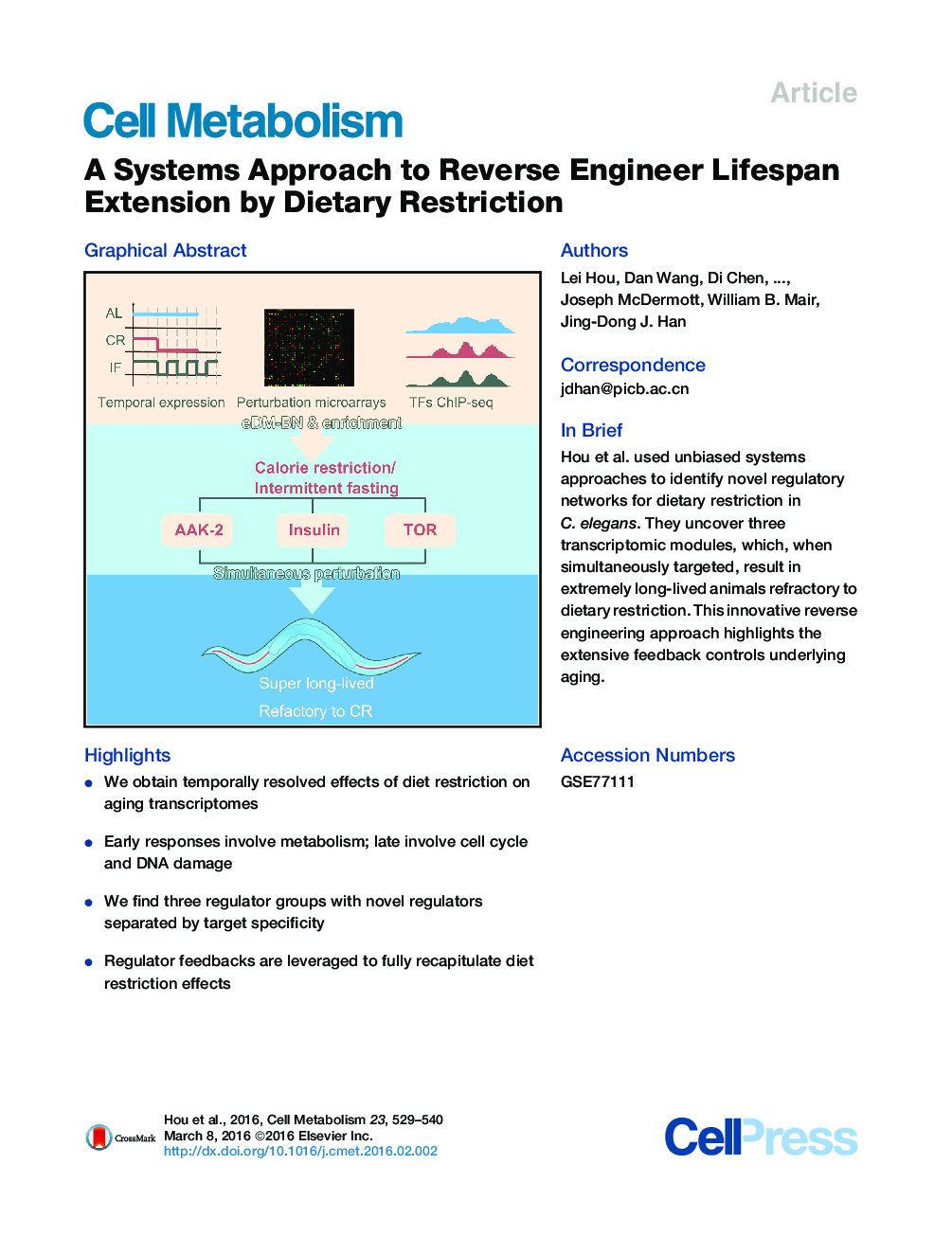| Article ID | Journal | Published Year | Pages | File Type |
|---|---|---|---|---|
| 2792535 | Cell Metabolism | 2016 | 12 Pages |
•We obtain temporally resolved effects of diet restriction on aging transcriptomes•Early responses involve metabolism; late involve cell cycle and DNA damage•We find three regulator groups with novel regulators separated by target specificity•Regulator feedbacks are leveraged to fully recapitulate diet restriction effects
SummaryDietary restriction (DR) is the most powerful natural means to extend lifespan. Although several genes can mediate responses to alternate DR regimens, no single genetic intervention has recapitulated the full effects of DR, and no unified system is known for different DR regimens. Here we obtain temporally resolved transcriptomes during calorie restriction and intermittent fasting in Caenorhabditis elegans and find that early and late responses involve metabolism and cell cycle/DNA damage, respectively. We uncover three network modules of DR regulators by their target specificity. By genetic manipulations of nodes representing discrete modules, we induce transcriptomes that progressively resemble DR as multiple nodes are perturbed. Targeting all three nodes simultaneously results in extremely long-lived animals that are refractory to DR. These results and dynamic simulations demonstrate that extensive feedback controls among regulators may be leveraged to drive the regulatory circuitry to a younger steady state, recapitulating the full effect of DR.
Graphical AbstractFigure optionsDownload full-size imageDownload high-quality image (179 K)Download as PowerPoint slide
